Podcast: Download (Duration: 50:36 — 47.1MB)
Get Notified Of Future Episodes Apple Podcasts | Spotify | Amazon Music | Android | Blubrry | Gaana | TuneIn | Deezer | Anghami | RSS | More
Charley Valher of Valher Media specializes in video advertising. Today James calls on him to unpack the factors behind video’s current dominance in the marketing scene, and share his expertise on how to create video ads.
Together they’ll look at the changes that are driving video’s popularity.
They’ll touch on the uses of background stock footage, and whether personality marketing is important to an ad’s success.
And Charley will share a useful guide for video advertising production.
Table of contents:
1. Why is video such a big thing?
2. What sort of equipment does it take?
3. What does your audience expect?
4. Authenticity over perfection
5. Location makes a difference
6. Good native YT video versus a good ad
7. Is it worth amplifying the winners?
8. Do you need to be in your videos?
9. Learning through continual testing
10. A checklist to go by
11. Need help with your video campaign?
Why is video such a big thing?
Video is having a resurgence, and part of the reason, Charley believes, is it’s the most effective medium for building trust. While text can establish a certain level of trustworthiness, and adding images or audio can enhance it, video stands out. With video, viewers can see facial expressions, hear voice intonations, and observe body language, providing a richer experience and fostering deeper trust.
James recalls the challenges of integrating videos into his website around 2007-2008. Gary Vee’s effective use of video for Wine Library TV inspired and motivated him to produce regular content.
Despite these initial attempts, however, James feels the timing wasn’t right. Fast forward to today, and external factors like platform evolution and audience preference have since changed, favoring video content.
Charley agrees that several factors have contributed to the video boom. The availability of better and affordable equipment, platforms that support short video content like Shorts and Reels, and changing consumption patterns have all played a role. Moreover, advancements in internet speed have made video streaming smoother, once a significant pain point.
James recognizes the potential of video advertising. Charley’s massive investment in video ads, with a planned spend of about one and a half million dollars for the month of July 2023, attests to the medium’s efficacy and impact. Both agree that the combination of platforms pushing video and creators’ readiness to produce the content is driving the current video trend.
What sort of equipment does it take?
James knows the importance of having the right equipment for creating videos, and has had the benefit of several professional guides.
Apart from the guidance, James has invested in various equipment for his video production needs. He uses a DSLR camera for podcasting, an iPhone with additional lighting and a shotgun microphone, another DSLR with a wide-angle lens, and a compact camera like the Canon G7 X, each having its unique purpose and setup.
Despite this plethora of high-end equipment, James emphasizes that equipment quality isn’t the only factor that determines the success of content. It’s about how one uses it, ensuring that every piece is set up correctly to achieve the best video and sound quality.
Charley says people often believe they need top-tier, professional-grade equipment to create good content, a belief that can hinder many from starting.
He tells of a client who uses both high-end recording equipment and a simple iPhone for ads. Interestingly, many times, the iPhone-shot content outperforms the professionally-shot videos. This indicates that while equipment can enhance quality, content and authenticity play a significant role in viewer engagement.
What does your audience expect?
The choice of equipment and setup, says Charley, should align with the expectations of your audience based on the niche you are serving.
For instance, in the finance sector, your audience expects professionalism and quality, calling for higher-end equipment like DSLR cameras. In the fitness niche, authenticity and realness might be more valued, letting you use simpler equipment like recent iPhones with good microphones.
The equipment should reflect the image and trustworthiness the audience expects from a particular industry.
Apart from visuals, Charley says sound quality is a critical element in content production. Even if visuals are not of the highest resolution, clear and quality audio can make a significant difference in audience engagement. As a foundational guideline, sound quality should be prioritized, ensuring that the message is conveyed clearly, enhancing the overall effectiveness of the content.
Authenticity over perfection
An emphasis on authenticity over technical perfection is crucial in content creation. Overly produced and polished content might not resonate as much with viewers as genuine and “real” content does. This authenticity creates a sense of trust, as shown by the appeal of figures like Joe Rogan, who often presents himself in a relatable and unrefined manner.
James shares how his previous podcast content was overly sanitized, sometimes omitting the raw and candid. He admitted holding back on certain opinions during the pandemic to preserve income and avoid controversy. But authenticity, he’s decided, is essential for building genuine connections with an audience, and overly polished content can appear disingenuous or unrelatable.
Location makes a difference
Location, says James, can enhance the quality and appeal of videos. Moving away from his typical bookshelf background, he recently shared a video of himself surfing, which was received enthusiastically by his core audience.
Charley tags James’ unique branding as “lifestylist,” as someone who successfully balances business with leisure. Showcasing such a lifestyle authentically, he says, would build more trust among the audience.
James sees working from places like cafes or beaches as an ineffective use of time and location, a failure of sorts. He and Charley toy with the idea of using this perspective in a promotional ad, underscoring the value of realness in storytelling.
Good native YT video versus a good ad
Charley invests in advertising across major platforms like YouTube, Facebook, Instagram, and TikTok. He emphasizes that the nature of video content, or how it’s packaged, varies significantly for each platform. Depending on the targeted demographic, each has its unique appeal, such as TikTok for younger fitness enthusiasts and YouTube for gamers and musicians.
There’s a clear distinction between native content on YouTube and an advertisement. Videos created for a channel differ from those designed for pre-roll ads or YouTube Shorts. In the realm of ads, the content’s length and intent become crucial; an hour-long podcast or a 7-10 minute video wouldn’t be as effective as a short, concise advertisement. The platform’s nature and its audience create the need for ads tailored specifically to their environment.
While YouTube short ads and Meta Instagram ads have similarities, their approach might differ. Charley uses YouTube Shorts as ads to build remarketing lists and gauge engagement levels. Based on these interactions, he then decides where to place more specific ads.
Despite the possibility of using similar content across platforms, Charley says that often one platform outperforms the others, prompting advertisers to customize their content accordingly.
Is it worth amplifying the winners?
James observes that the same short video performed differently on his old versus new YouTube channels, hinting at the importance of an engaged audience. He questions the value of boosting organically successful content.
Charley emphasizes the dual strategy: established content creators can repurpose well-received content to drive sales, while newcomers might first use ads to gauge which content resonates, and then focus on organic content creation.
Both James and Charley agree it’s essential to monitor performance metrics, regardless of the content’s origin. Paid ads can help determine the type of content to produce organically. In contrast, successful organic content can be turned into paid promotional material. The synergy between paid and organic content strategies is maximized by paying attention to audience engagement data.
Do you need to be in your videos?
James brings up the idea of using stock video for short content. When is stock footage appropriate, he asks? And is it necessary for a content creator to be present in videos?
Charley acknowledges that while some clients are camera-shy, there are numerous ways to make engaging videos without showing one’s face.
Admittedly, trust is inherently built when viewers see someone’s face in a video. However, Charley believes this isn’t the sole method to gain trust. In shorter videos like Reels, TikToks, and Shorts, using stock images is acceptable. For industries that require a higher trust factor, involving influencers or showcasing client testimonials can be beneficial. These approaches offer proof and build credibility, even without the business owner’s presence in the video.
Brands like Apple use influencer reviews to promote their products, understanding the trust these influencers have already built with their audience.
Videos don’t always need to feature faces, but voices, paired with screenshares or checklists, can convey powerful messages. E-commerce tutorials, for example, presented as spreadsheet walkthroughs, resonate with the target audience because they align with their process-oriented mindset.
Charley’s mortgage broker client, while avoiding the camera, successfully used screenshares to compare banks’ lending policies. By demonstrating the software and explaining the different lending options, the broker effectively showcased his expertise.
This method not only established trust but also provided valuable insights for viewers, stressing that there are versatile ways to employ video for engagement and conversion without necessarily being on camera.
Learning through continual testing
Charley emphasizes the importance of being his own experiment, frequently testing ads on his own platforms and with willing clients. When a strategy proves successful, they develop a template and share it across their client base.
Surprisingly, Charley has found that strategies successful in one industry, like finance, can be just as effective in a seemingly unrelated field, like fitness.
James points out the value of transferring tactics from one industry to another, as such strategies often appear refreshing and unique in the new context. He notes, for instance, a trend of fitness professionals transitioning to the business sector, demonstrating the potential overlap and adaptability of strategies across different fields.
A checklist to go by
Call it cheeky, says James, but would Charley have a framework for putting together a good ad?
Charley fortunately came prepared, and obliges with the following checklist:
1. Starting point for a successful ad: The foundation of a successful ad is offering something people genuinely want. If there’s no demand for the product, the ad won’t be effective, no matter the technical quality.
2. Importance of the hook: The beginning of an advertisement, especially a video ad, is crucial. The first 10 seconds will largely determine if the viewer keeps watching. A strong hook can engage viewers and make them curious about the content.
3. Relatability: It’s impactful when viewers can identify with an ad. When they can think, “This is me,” they’re more inclined to be interested in your offer.
4. Aggravating the problem: For products that offer solutions, it’s effective to emphasize and “twist the knife” on the problem they solve. By making the issue feel urgent, the solution becomes more attractive.
5. Relevance to real-life situations: James and Charley use the example of frequent bank letters James receives about rising interest rates. Many people have had the same happen to them. Connecting with real-life experiences can make ads more relatable and powerful.
6. A clear outcome: Ads should highlight a clear and specific outcome. For instance, an ad for mortgage refinancing might promise specific savings within a set timeframe.
7. Unique Selling Proposition (USP): It’s essential to communicate why someone should choose your solution over others. For example, a mortgage broker might emphasize unique lender relationships or speed of service.
8. Showcasing the reward: Illustrate the benefits and rewards of taking action. Using the mortgage example, this might be emphasizing financial freedom and lessened stress after refinancing.
9. Proof of efficacy: Evidence of the product or service’s effectiveness, like testimonials or before-and-after photos, can significantly bolster an ad’s credibility.
10. Call to Action (CTA) and clarity: End with a compelling reason to act now and provide clear instructions on the next steps. Eliminating confusion can significantly boost conversion rates.
Need help with your video campaign?
Charley’s company, Valher Media, specializes in video marketing. By visiting valhermedia.com/review, you can ask for a review on your existing ad campaign, or get guidance if you are considering starting a new one.
Charley emphasizes they only take on clients they can genuinely help, to maintain ethical standards and avoid negative feedback.
And if you’d like Charley’s active hand in a campaign, look him up at ValherMedia.com.
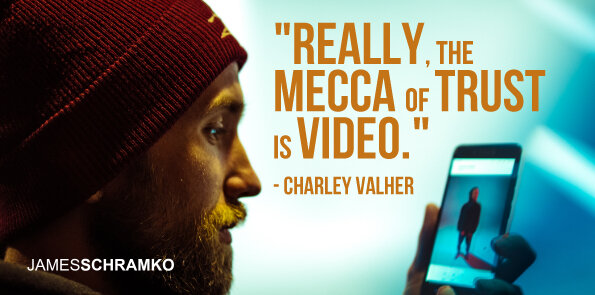
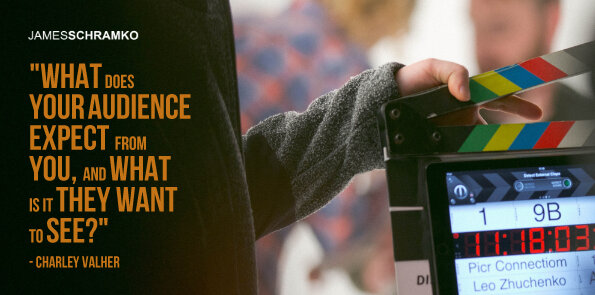
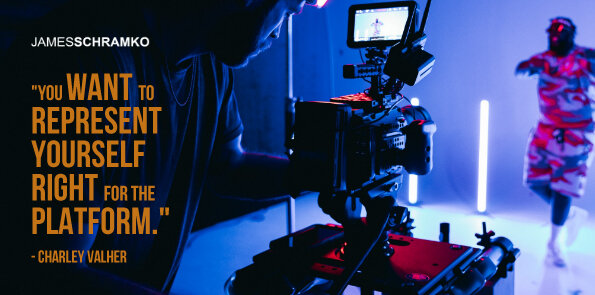
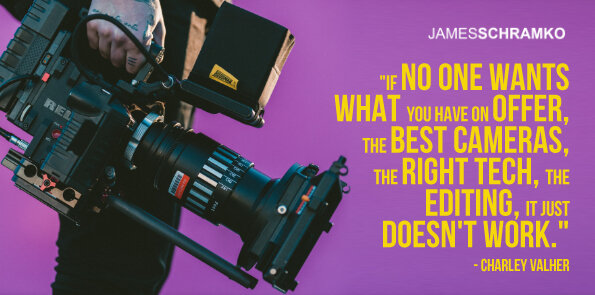
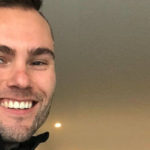






Leave a Reply